 |
bolton
Bolton was the subject of an advertising campaign by REVO in 1939. The town was being relit with
low-pressure sodium and the firm were quick to capitalise on the marketing opportunity provided by the use of its
lanterns.
Notes in Public Lighting reveal how the scheme were started in 1937,
with people gradually become use to the strange orange colour:
The main Manchester Road has been relit. The new installation is comprised
of 78 150W Sodium Vapour Lamps housed in REVO Directional Fittings
erected on tramway poles at 25' high and having an overhang of 5' from the
kerb edge. The spacing is 42 yards, the road width 38 feet kerb to kerb, and
a staggered system has been adopted. With the original lighting a poor Class "H"
the new installation provides Class "D." At the end of the last financial year
there have been an addition of 133 lighting units: 28 have been gas, 105 electric.
Gas lighting is used on new housing schemes. The object of the Lighting Committee
is to illuminated all main roads to at least a generous Class "E" with overhead lighting
to the Interim Report. Less stringency is being used in the spacing of lamps on
secondary roads. After two years' experience of the performance of electric
discharge lamps, every confidence is placed in their installation. Both Mercury Vapour
and Sodium Vapour have given most gratifying results. The colour complex seems to vanish
from people's minds after the first few weeks and continual petitions have been made
for the extension of these systems. There is still in service a stretch of 23 Sodium
Vapour Lamps - 11 are burning all night and 12 are checked at 11:15PM - that were
erected in September 1935, a period of roughly 6,000 burning hours up to the end of
March. On this stretch only six lamps have been replaced.
Further issues of the publication revealed how the
scheme was continually growing, until expansion was stopped by the
war.

Interestingly it appears that Bolton's Lighting Committee continued with the new installation after the war and a large
number of these open directional mirrored fittings were used on the traffic and residentual routes around the town.
And thanks to Aidan Anderson, who took the following photos in the 1990s, it now becomes apparent that the installation
survived in many places until the 1990s, making it one of the oldest installations still working in the UK at that time.

Church Road, Bolton
Top-entry REVO C9922 lanterns, designed for
suspension over the centre of the carriageway, hence the long bracket arm. This appears to be a
later 1950s installation, given the use of relatively
plain Stewarts And Lloyds bracket arm, and the possible modification of existing traction poles for
the lighting.
The traction poles were probably also produced by Stewarts And Lloyds but not for street lighting.
Note the high-level gear box and overhead wiring connections.
The colour scheme is also odd with the dark green only being extended mid-way up the column.
© Picture: Aiden Anderson

Forrest Road, Bolton
The residential side-streets were also lit in the same manner. This twilight shot along Forrest Road
shows the smaller REVO C10310 lantern, which was designed for side-of-road mounting,
so didn't require such a long bracket.
© Picture: Aiden Anderson
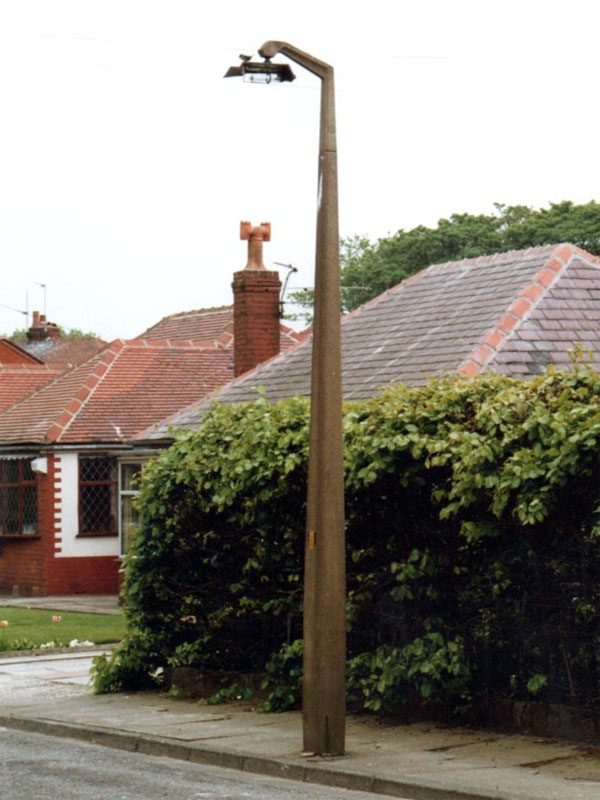
Forrest Road, Bolton
This daytime shot shows another street light from the same street. The lantern was mounted on
a Stanton 9D concrete column and bracket. These Stanton designs weren't available
until after the war, so provides evidence that Bolton's Lighting Department continued installing these
lanterns into the 1950s.
© Picture: Aiden Anderson
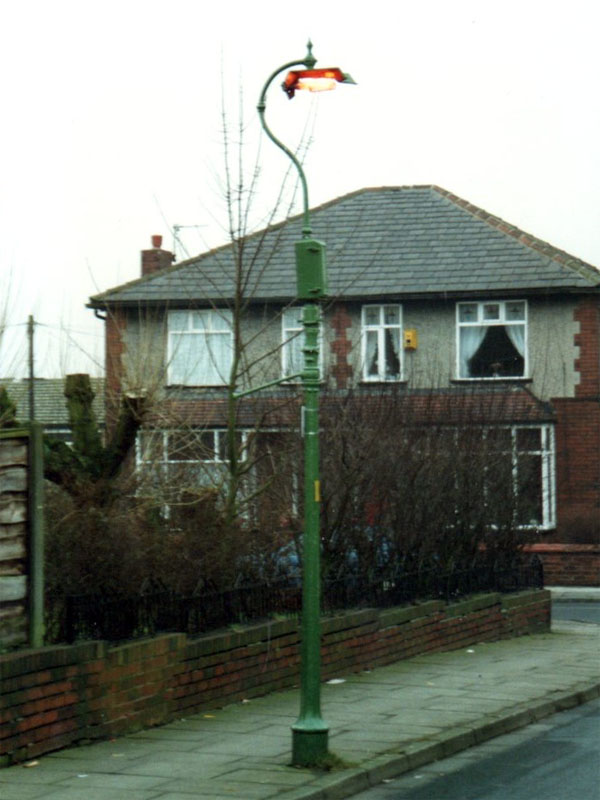
Archer Ave, Bolton
This is an older example of Bolton's residential street lighting. This cast-iron column was fitted with a high-level
termination box (which would also hold the control gear for the low-pressure sodium lamp), swan-neck bracket and
REVO C10310 lantern. The style of the bracket and finial suggests it was made by REVO.
© Picture: Aiden Anderson
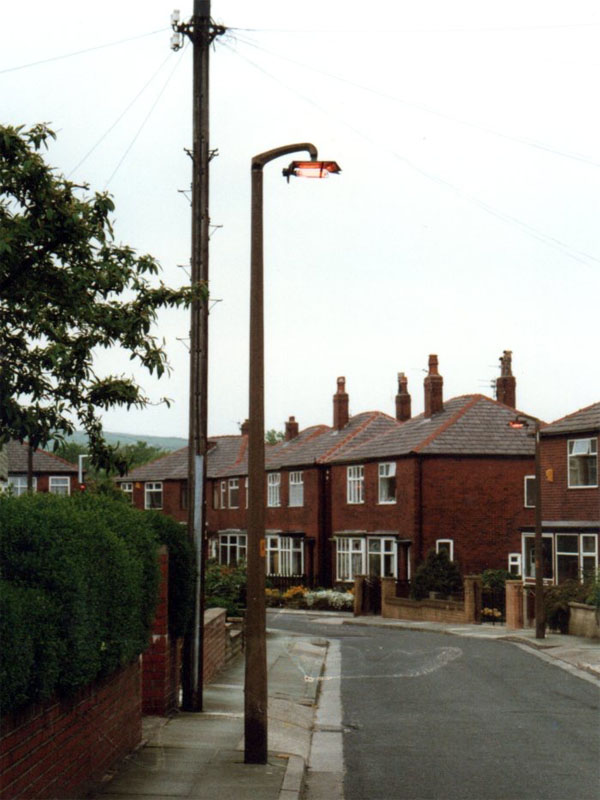
Unknown location, Bolton
This scheme probably dated from the mid-1950s or even the early 1960s, as the council were now using the more slimline
Stanton 10D columns and brackets. However, they still had a stock of REVO C10310 lanterns,
so could continue using the same lantern throughout all their side-streets.
© Picture: Aiden Anderson
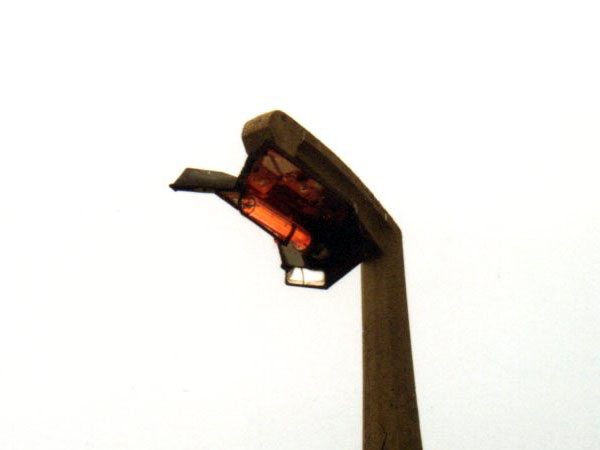
Unknown location, Bolton
This picture of a day-buring REVO C10310 shows clearly the extra ironwork and mirroring
at the back of the lampholder. This extension to the canopy helped to throw light across the road,
thus allowing the lantern to be installed closer to the kerb. (The main road lanterns, such as
the C9922, didn't have this addition, so required installing directly above the main
carriageway).
© Picture: Aiden Anderson
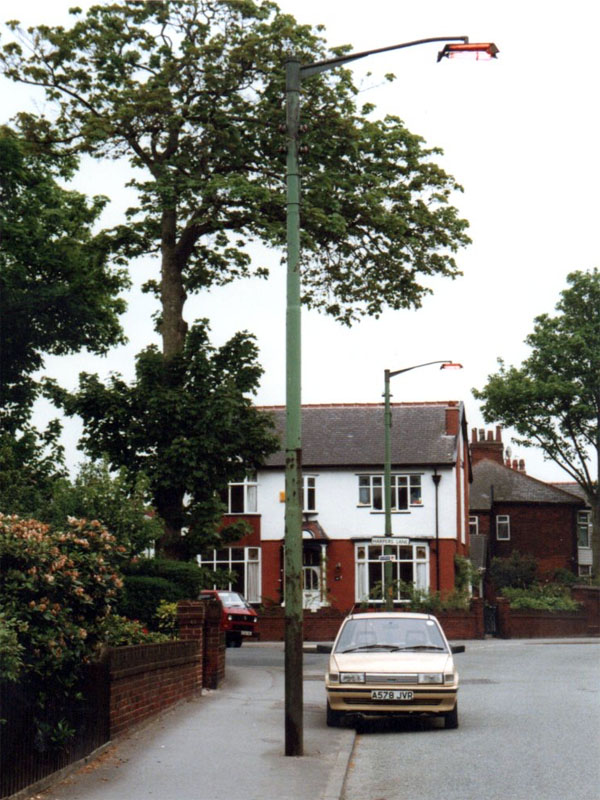
Church Road, Bolton
More examples of the top-entry REVO C9922 lanterns which were used for the main roads. There's obviously
a fault as these lanterns are day burning (as are many of the others in the previous photographs) so they were
group switched. (This isn't surprising considering these main road lanterns had their own overhead supplies).
© Picture: Aiden Anderson
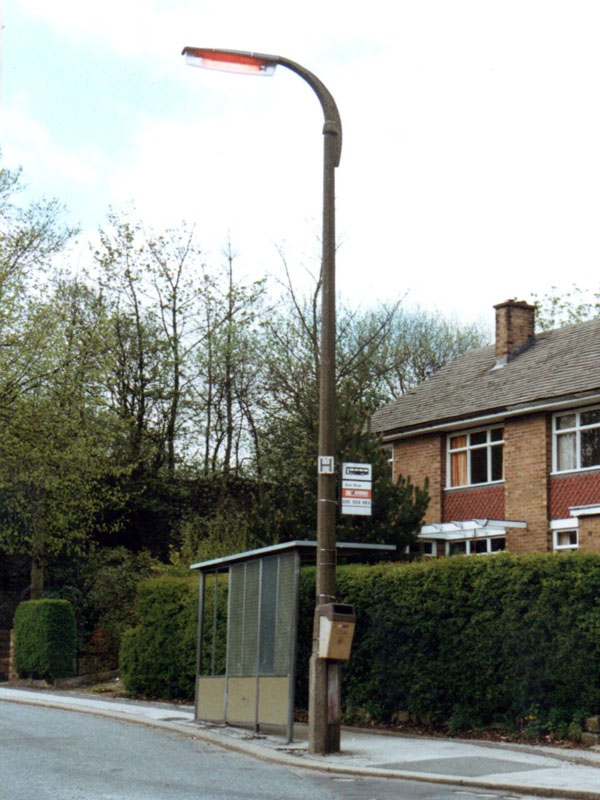
Turton, Bolton
This is a Concrete Utilities Avenue 3D with 3' 6" Arc 2 type bracket. Such designs were available
before the war, but most were installed as post-war schemes.
The lantern is not original to the bracket. It appears to be a GEC Z9504 - originally for 200W SLI/H lamps -
but now fitted with a 135W SOX. Previous examples of main road lighting show the REVO C9922 lanterns which
took 90W SOX lamps - but I believe this road had its lighting upgraded in the 1960s or 1970s - and the higher wattage
GEC Z9504 was installed. This was probably due to the road being a bus route and therefore requiring a higher
level of lighting.
© Picture: Aiden Anderson
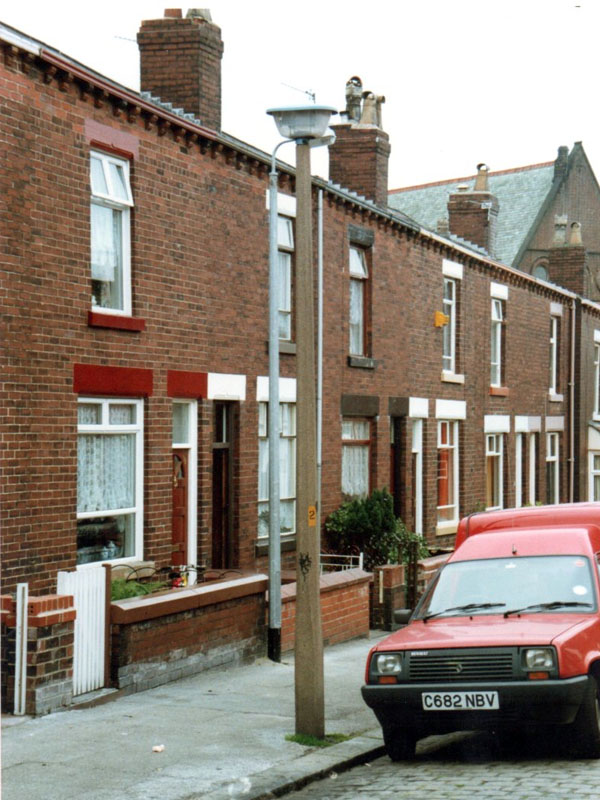
Unknown location, Bolton
Another Stanton 10 but this time fitted with a post-top REVO Goldcrest lantern. The post-top
was probably used as this was a narrower street and the lantern didn't need to be positioned on a bracket.
Note the modern replacement behind, being placed at the back of the pavement. This modern column and bracket was fitted
with a GEC Z9580 lantern.
© Picture: Aiden Anderson
|



